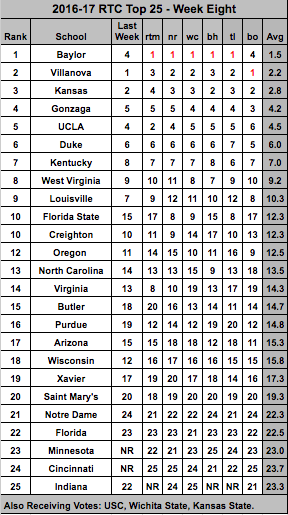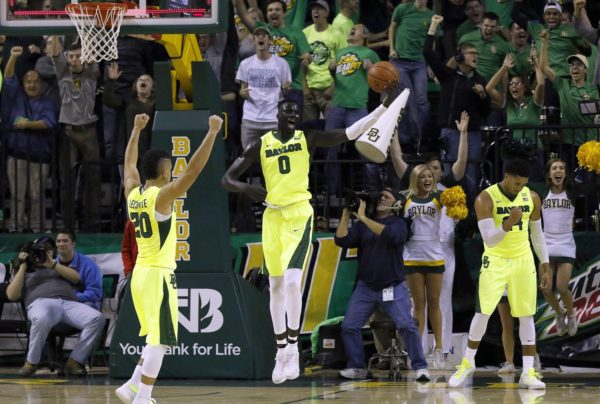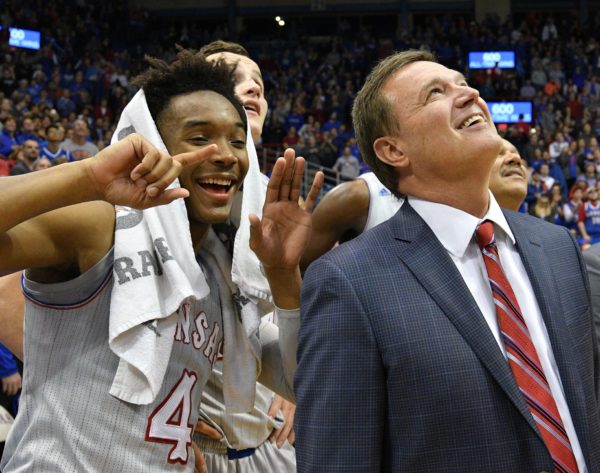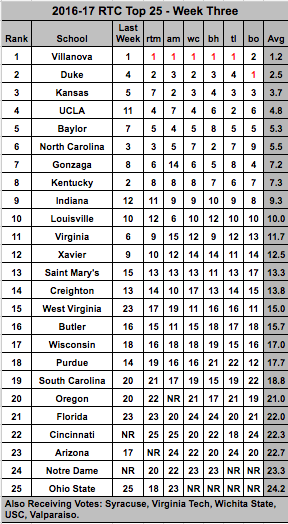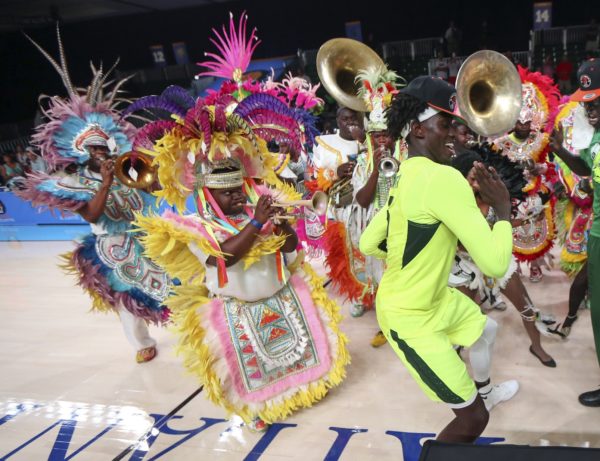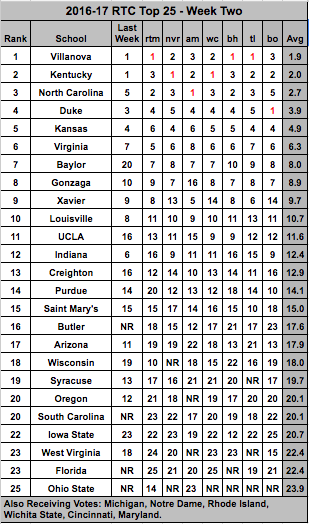Quick Reactions to Tuesday Night’s Big 12 Action
Posted by Brian Goodman on January 11th, 2017With college football season officially in the books, hoops took the baton last night with five of the Big 12’s best teams on display. Though only one contest came down to the last few minutes, there were several key takeaways from Tuesday’s three league battles. Here’s what we learned.
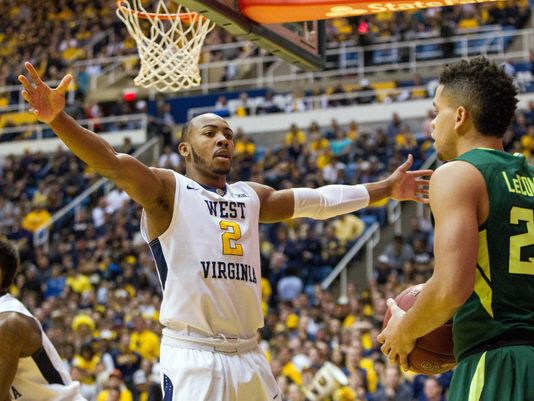
Jevon Carter put an early end to Baylor’s reign as the #1 team in America. (Ben Queen/USA Today Sports)
- The battle for second place is officially on. It’s worth noting that top-ranked Baylor entered last night’s game against West Virginia as a six-point underdog, but the Bears were woefully unprepared for the Mountaineers’ press, turning the ball over on 35.7 percent of their possessions en route to their first loss of the season. Baylor’s resume still shows a tremendous set of wins, but the one thing Scott Drew‘s team lacks — and West Virginia does not — is a true road win against an NCAA Tournament-caliber team. In dominating the nation’s #1 team from start to finish, the Mountaineers effectively neutralized their close loss against a Texas Tech team that may end up on the bubble. Nathan Adrian and the rest of “Press Virginia” have a good chance to keep things rolling over the next week with upcoming games against the league’s two worst teams in Texas and Oklahoma, which is about as much of a breather as it gets in this conference.
- These aren’t (exactly) last year’s Mountaineers. In the first two seasons of Bob Huggins‘ retooled running and pressing system, the Mountaineers paid a price for their intense defense by finishing dead last nationally in defensive free throw rate. Year Three of the experiment has revealed a slightly different story, as the Mountaineers rank a more respectable 273rd (40.5%) this time around. There’s a natural ceiling to how much a team can limit fouls while playing such aggressive defense, but West Virginia may be finding it. The team’s depth is still an asset that can prevent foul trouble from becoming an issue, but it always helps to be able to keep guys like Adrian, Esa Ahmad and Tarik Phillip on the floor as much as possible. Another area where the Mountaineers have improved is in three-point shooting, burying 36.7 percent of their attempts from distance — up from 32.5 percent last season, and 31.6 percent in 2014-15. While West Virginia will continue to rely heavily on points in transition, the long ball gives them a weapon on night when they either don’t generate turnovers or when a considerable ratio of the turnovers are of the dead-ball variety.





























